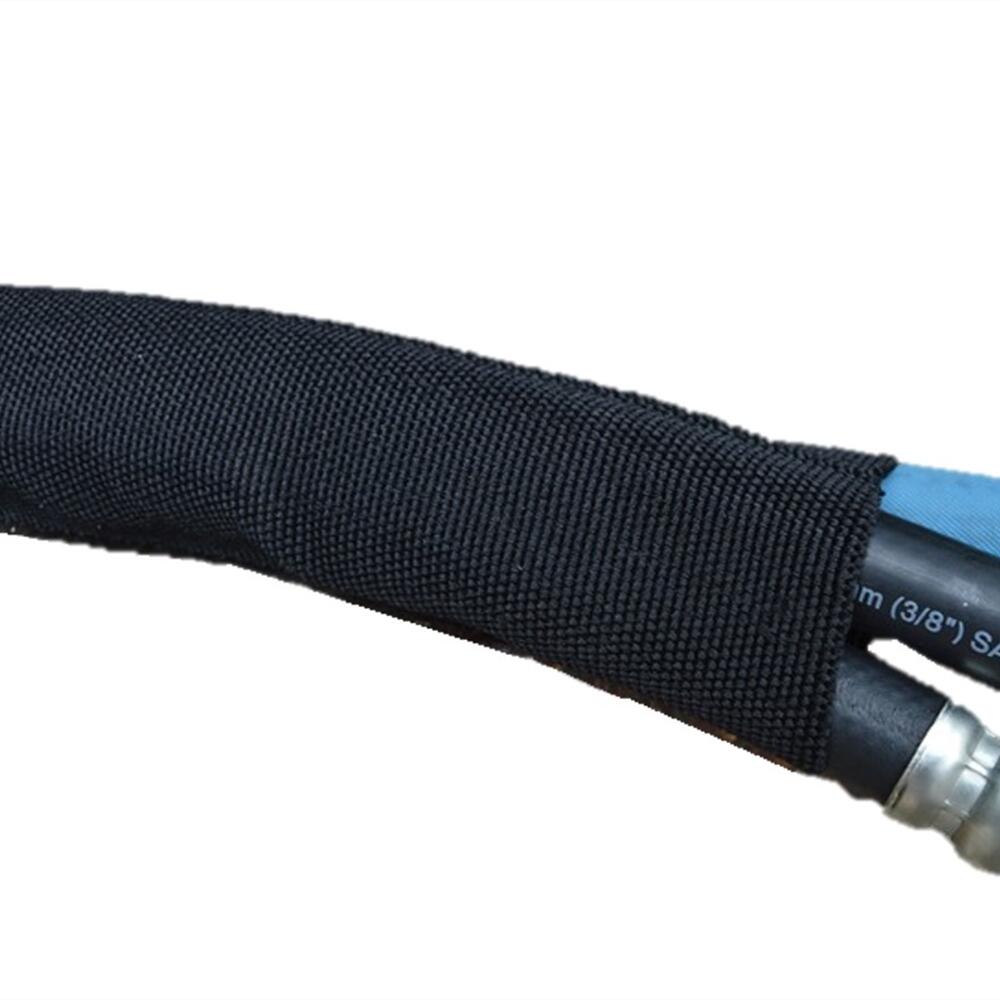Hydraulic hose burst protection sleeve is typically made from nylon or polyester due to a combination of functional, environmental, and economic factors. Here's a structured breakdown of the reasons:
High Tensile Strength:
Both materials possess high tensile strength, enabling them to contain the sudden pressure surge during a hose burst. Their braided or woven structures can absorb and distribute energy effectively, preventing catastrophic failure.
Flexibility and Durability:
Nylon: Known for flexibility and abrasion resistance, it maintains hose maneuverability in dynamic environments. It also resists oils and chemicals, common in hydraulic systems.
Polyester: Offers excellent resistance to stretching, UV radiation, and moisture, making it ideal for outdoor or humid applications. Its dimensional stability ensures long-term durability.
Environmental Resistance:
Chemical/Oil Resistance: Nylon excels in environments with exposure to hydrocarbons and lubricants.
UV/Weather Resistance: Polyester outperforms in sunlight and wet conditions, reducing degradation over time.
Temperature Tolerance: Nylon handles moderate heat better, while polyester maintains performance in varied climates.
Cost-Effectiveness:
Both materials are more economical than high-performance alternatives like Kevlar or steel, providing a balance between cost and functionality. This makes them suitable for widespread industrial use.
Lightweight and Corrosion Resistance:
Unlike steel, nylon and polyester are lightweight, reducing system load, and are immune to corrosion, enhancing longevity in harsh conditions.
Manufacturing Adaptability:
Easily woven into tight, expandable braids, these materials can be engineered to allow controlled expansion during a burst while maintaining structural integrity.
Material-Specific Considerations:
Nylon: Preferred for high-abrasion, oily, or higher-temperature settings but may absorb moisture in humid environments.
Polyester: Chosen for UV-exposed or moisture-rich applications due to its hydrophobic nature and UV stability.
In summary, the choice between nylon and polyester hinges on specific application needs, with both offering a robust, flexible, and cost-effective solution for hydraulic hose protection.
